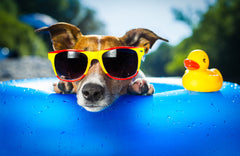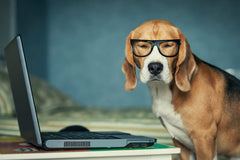Dealing with a flea infestation is a common yet distressing experience for many dog owners in the UK. In this guide, we delve deep into understanding how to identify a flea infestation and the steps to take to treat and prevent it.
Identifying Fleas
Before embarking on a treatment and prevention journey, it’s essential to correctly identify the presence of fleas on your dog. Here’s how to go about it:
Signs Your Dog Has Fleas
- Scratching and biting: Constant scratching, especially around the neck, ears, and lower back region.
- Red and irritated skin: Persistent flea bites can lead to skin irritation.
- Flea dirt: Small black or brown spots on your dog's skin which are flea faeces.
Flea Identification
- Visual inspection: Fleas are small, dark, and fast-moving.
- Flea comb: Use a fine-toothed comb to check for fleas and flea dirt.
Understanding how to identify fleas is the first step in tackling the issue head-on.
Immediate Actions
Once you have identified a flea infestation, here are the immediate actions you should undertake:
Flea Treatment Products
- Topical treatments: These are applied to the skin and offer month-long protection.
- Oral medications: Quick-acting tablets that can kill fleas within hours.
Bathing
- Flea shampoos: Specially formulated shampoos that can kill fleas on contact.
- Regular grooming: Helps in monitoring the flea situation closely.
Taking immediate actions can provide your dog with relief and prevent further infestation.
Long-Term Treatment
Managing a flea infestation is a long-term commitment. Here, we delve into long-term treatment options:
Medications
- Prescription medications: Consult your vet for prescription flea treatments.
- Over-the-counter options: Available at pet stores, but always consult your vet first.
Regular Check-ups
- Vet visits: Regular vet visits to monitor the progress.
- Home checks: Regularly inspect your dog’s coat at home.
Implementing a long-term treatment plan ensures the complete eradication of fleas.

Prevention
Prevention is better than cure. Learn how to prevent a flea infestation from recurring:
Regular Treatments
- Monthly treatments: Using flea treatments regularly can help in prevention.
- Natural options: Some owners opt for natural flea repellents; however, their effectiveness can vary.
Protective Measures
- Flea collars: Offers protection by releasing flea repellents continuously.
- Avoiding flea habitats: Avoid areas known for high flea populations.
By following a robust prevention strategy, you can protect your dog from future infestations.
Environmental Clean-Up
An integral part of flea management is ensuring your environment is flea-free. Here's how to go about it:
Cleaning
- Regular hoovering: Ensure to clean all nooks and crannies where fleas can hide.
- Wash bedding: Regularly wash your dog’s bedding in hot water.
Pest Control
- Flea bombs: In severe infestations, you might consider using a flea bomb.
- Professional help: If the situation gets out of hand, don’t hesitate to seek professional pest control help.
Environmental clean-up forms a crucial part of the flea management process, ensuring a flea-free home for you and your pet.
FAQs
Q: How can I identify fleas on my dog?
A: Look for signs such as constant scratching, red and irritated skin, and the presence of flea dirt on your dog's skin.
Q: What are the long-term treatments for flea infestation?
A: Long-term treatments involve using regular flea treatments, both prescription and over-the-counter options, coupled with regular vet check-ups.
Conclusion
Dealing with a flea infestation in your dog is a task that requires a well-rounded approach encompassing identification, immediate action, long-term treatment, and prevention, coupled with environmental clean-up. By following this comprehensive guide, dog owners in the UK can effectively manage and prevent flea infestations, ensuring the health and happiness of their furry friends. Remember, the key to a flea-free dog is regular checks and preventative measures.




